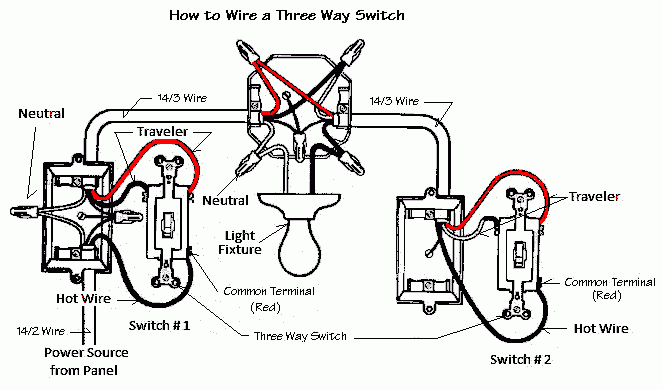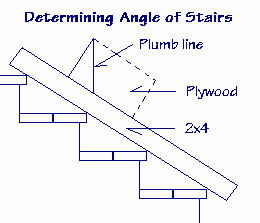
Building Confidence
| Volume 8 Issue 9 ISSN 1923-7162 |

Welcome to our Newsletter including home improvement questions and answers, a tip of the month and an article from our website.
What's Happening
We are behind in our Newsletters, but gradually catching up.
I've been in the ramp building business lately. One fairly high ramp, 5', for a wheelchair for my brother-in-law to be wheeled up to the main floor level in his house. The other, a low one, 21", for an elderly aunt returning home after knee surgery, using a walker. Both ramps are about 1 in 12, so they can be used for wheelchair access, if necessary. I installed 90 lb. rolled roofing with mineral to my Aunt's ramp, so she would not slip on the wet surface, living on the West coast. It protects the plywood nicely, as well.
Tip of the Month
When building the long high ramp, I ripped 2 sheets 3' wide, then another sheet 2' wide. This way I saved on plywood by combining the 1' strip off the 3' ripping, with the 2' ripping for the 3' wide ramp. I placed the joists lengthways at 1' centers so the plywood joints matched up with a joist. I also screwed everything together, so dismantling would be easy when the ramp is no longer needed.
Ask Dave!
Hi Dave,
I have a 3way switch in a house that we recently purchased and I
cannot get it to work so that the light can be turned on from either
switch regardless of the other switches position Can you send me some
info and or troubleshooting guide so that I can get it working properly.
Thank You
Here is a diagram of a 3 Way Switch:

Our member Terry, an electrician explains:
Three-way switches always work in pairs. Each switch has 3 screw terminals. There is a common screw identified with a different color, usually red and 2 other lighter colored screws that are for 2 wires that go between the 2 switches. These 2 wires are called travelers or dummies depending on where you are. The travelers alternate depending on the positions of each switch. When switch #1 is in position 1 one of the travelers is hot and the light comes on. If you turn switch #2 off then that switch changes to traveler #2 and the light goes off. If you go back to switch #1 and change it to the other position then the other traveler becomes hot and the light comes back on. The common screw on switch #1 has the hot wire from the panel attached. On switch #2 the common screw has the return wire that goes to the light fixture. The neutral wire goes right from the panel to the light fixture. Trouble shooting 3-ways should be performed by a licensed electrician because the best way to check them out is with the power on and is not a do it yourself job.
I hope this helps,
Terry
Thanks very much, Terry. I'm sure our readers appreciate you taking the time to clarify this subject, as I do. The main point here is to do no more than you have the ability to do, safely.
Dave
Hi Dave,
I was wondering if you could give me the rundown on how to create the spanish drag texture, how much to dilute the compound prior to spraying, what type all purpose, timing , trowels to use etc etc
Hi Simon,
Don't create this stuff it has already been done for you. Use Super White Texture Compound for walls and ceilings. Tape and mud, as usual, then prime the surface with 2 coats of primer/sealer. The compound should be in a consistency of pancake batter, so it will come out of the hopper sprayer. Spray a 10 x 10 foot square area, let dry for 10 to 20 minutes. With a large drywall trowel, lightly drag the trowel over the spray with very little pressure, knocking the spray down, slightly. Hold the trowel almost flat to the surface. This is finished after drying for 8 hours, no further paint is required.
Like anything new or unfamiliar, try a test patch before moving on to the main project.
Good luck,
Dave
I need to replace my garage door and would like to build the panels myself. Do you have any instructions, guides or articles that would address how this is done? The opening is for a typical 7'x9' garage door.
Thanks, Gene
Hi Gene,
The panels of an overhead garage door are made the same way as the panels of a raised panel cabinet door. The panels are inset into the stiles and rails, which form the structure of the door. This means that the panels are assembled into dadoes of the stiles and rails. Do you have the old door to repair, or are you starting from scratch? What about the hardware?
Dave
(Gene never got back with me)
How do I measure the angle at the top and the bottom of a handrail so I can put on the cap or end of the railing so it is parallel to the floor when I am done. I have read some articles that say to use a 16 degree cut. Is that correct? Please advise
Hi Scott and welcome to our website.
The angle of your particular handrail depends on the angle of your stairs. Every set of stairs is different. The easiest way to find the angle of your own handrail is to lay a straight edge down the stairs resting on top of each nosing. Get a level and plumb a line (scribe a vertical line) on the straight edge (a 2x4 for example) or a small piece of plywood. This is the angle of the handrail that will match your stairs. If the handrail is already in place, you can level a short board against the handrail and scribe the angle, made by the rail, on the board.
Here is a drawing:

Hope this helps,
Dave
Feature Article of the Month
Remodeling 1: Mold and What to Do About It
While answering a question from a member on the subject of mold in her home, I came upon this article written in March 2001 by the Workplace Safety and Health Division, Manitoba Department of Labour & Immigration, Canada. This article tells it all, so I want to share it with you. Keep in mind that this report is mainly for contamination in large commercial buildings; however, information contained in this report can be helpful if problems arise in your own home as well as the office.
Click here for a good vinyl siding cleaning solution that gets rid of mold, algae and mildew.
Introduction to Mold: What is Fungi or Mold
Fungi are primitive plants that lack chlorophyll and therefore must live as parasites or feed on organic matter that they digest externally and absorb. The true fungi include yeast, mold, mildew, rust, smut and mushrooms. They usually grow best in dark moist habitats, and are found wherever organic matter is available. Some fungi can grow under extremely difficult conditions. This section discusses those fungi known as molds (sometimes spelled moulds). Humid or damp conditions in the home, school or workplace may promote the growth of molds, as well as bacteria and dust mites.These organisms may contribute to poor indoor air quality and can cause health problems.
Fungi in indoor environments comprise microscopic yeasts and molds, known as micro fungi, while plaster and wood-rotting fungi are referred to as macro fungi because they produce sporing bodies that are visible to the naked eye. Apart from single-celled yeasts, fungi colonize surfaces as a network of filaments, and some produce numerous aerially dispersed spores and other chemical substances such as volatile organic compounds (VOC's). The naturally occurring substances produced by fungi that bring about a toxic response are called mycotoxins, and are usually contained in the spores. Toxicity can arise from inhalation or skin contact with toxigenic molds... read more at http://daveosborne.com/dave/articles/mould.php
Almost the End
Well, that concludes this edition of our Newsletter. As you can see, we are trying to catch up with our delayed back issues. I hope the questions for this month may help you in some of your projects or, at least, give you some ideas.
Your source for building tips, woodworking & furniture plans, house plans and building advice directly from Dave...
Hi, I'm Dave Osborne. With over 50 years experience as a journeyman carpenter, foreman and contractor in heavy construction I enjoyed working with apprentices and sharing the tricks of the trade that others shared with me. Now I get emails from Members all over the world and we include many of my answers in our Free Monthly Newsletters. Some of my answers include drawings and instructions specific to a project, but may also answer your questions. I use correct construction terminology, so you can confidently inform your building supply dealers or contractors exactly what you need.
ASK DAVE!
The Benefits of Membership
Membership gives you full access to our hundreds of how-to articles, woodworking plans, converters, calculators and tables. Our Stair Calculator is one of the most popular on the internet. We have projects you can build for (and with) your kids, furniture for your wife, and sheds and gazebos. If you run into a problem or need advice your Membership includes unlimited email questions to me through our Ask Dave quick response button.
Join us!
Copyright © 1999-2024 DDFM Enterprises. All Rights Reserved. DDFM ENTERPRISES, DAVE'S SHOP TALK and the Dave Osborne logo are trademarks and service marks owned by DDFM Enterprises. All other trademarks on this site are the property of their respective owners. Site design by Design Strategies, Inc.